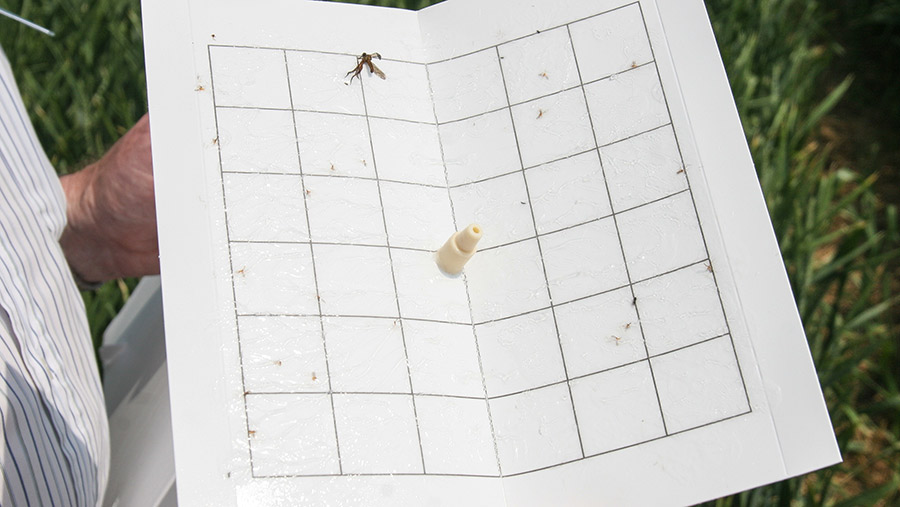Research targets pheromones to control key arable pests
 © Blackthorn Arable
© Blackthorn Arable Scientists at Rothamsted Research are investigating how pheromones and plant odours can be used to manipulate insect behaviour in order to control pest populations as part of integrated pest management strategies.
Dr Mike Birkett, principal chemical ecologist at Rothamsted, explains that insects communicate within their environment via “the language of chemistry”.
See more: Why biopesticides will play a bigger role on arable farms
“Insects change their behaviour when they detect pheromones and plant odours.
“These compounds can attract them to a mate for reproduction or allow them to recognise signals emitted by plants, informing them if certain plant species are suitable for feeding or as an egg-laying host,” he says.
Insects can also be repelled by pheromones and plant odours, enabling them to detect plants unsuitable for feeding and egg-laying, or avoid other insect species that could be predacious.
It is the insect’s ability to respond to these attractants and repellents that allows them to alter their responses.
Pest behaviours can, therefore, be manipulated by developing attractants or repellents deployed as part of integrated pest management.
“Pheromones and plant odours typically comprise volatile organic compounds, which insects detect on their antennae.
“These compounds have a similar type of chemistry and work in a similar way to when we smell perfume or food that gives off certain aromas,” says Mike.
“We have hundreds of species of insects, but it is important that we target the major ones – particularly aphids, weevils, cabbage stem flea beetle and midges.”
Latest research
Scientists are identifying ways to develop sensors that can detect whether specific volatile organic compounds are present that can alert growers to pest attacks on crops, explains Mike.
Insects emit certain pheromones when they have fed on a particular plant species. Once detected, a system could alert growers to their presence.
Sensors can not only detect volatile organic compounds emitted by insects but also those released by plants.
“A plant damaged by pests will release completely different or altered volatile organic compounds, which can be detected by sensors.”
Researchers are looking into the entire agro-ecological system, considering pests both above and below the ground, including species of wireworm.
It is essential that studies like this are scaled up and taken to the next level in order to generate a variety of integrated pest management approaches and a suite of tools available for farmers and growers.
“That’s why it is important to attend events like New Scientist Live to engage with the public and spread the word of scientific research.
“We need to drive forward the science that we carry out and deliver this into practical solutions for farmers,” Mike says.
Legume pest pheromone trapping
PheroSyn – a spin-off company of Rothamsted Research – has been developing novel pest pheromones and is now looking at launching a pheromone trap to control midges and weevils in legume crops.
After successful field trials, targeting pea midge and pea and bean weevil via pheromone trapping, the firm is keen to scale up production of its new integrated pest management tools to ensure a sustainable future for UK legumes.
Dr Mike Birkett, principal chemical ecologist at Rothamsted, explains that the pea midge trap works by using a synthetic sex pheromone that attracts male midges. The pea and bean weevil trap uses an aggregation pheromone that attracts both males and females.
The Future of Food & Agriculture: Feeding the world sustainably – meet the team


Farmers Weekly is working with these organisations to bring the Future of Food & Agriculture exhibit to New Scientist Live.
Partners
Harper Adams University is our lead education partner


